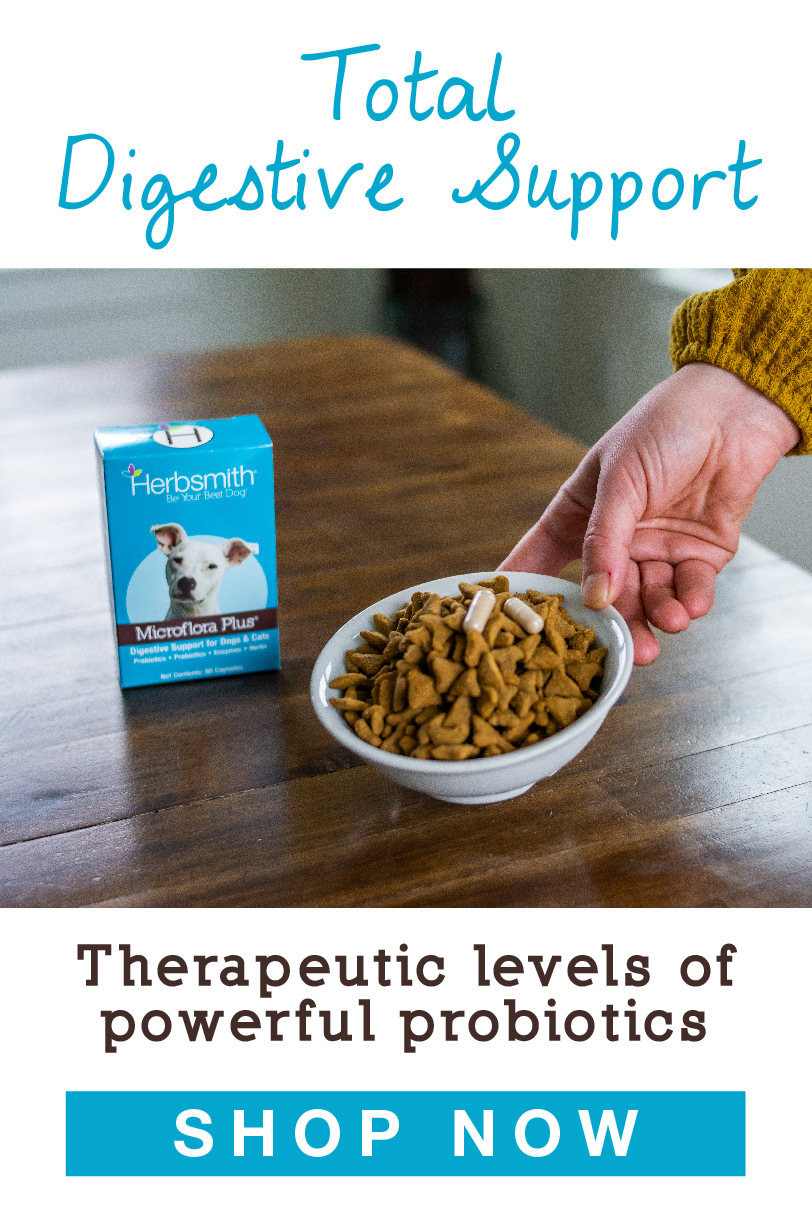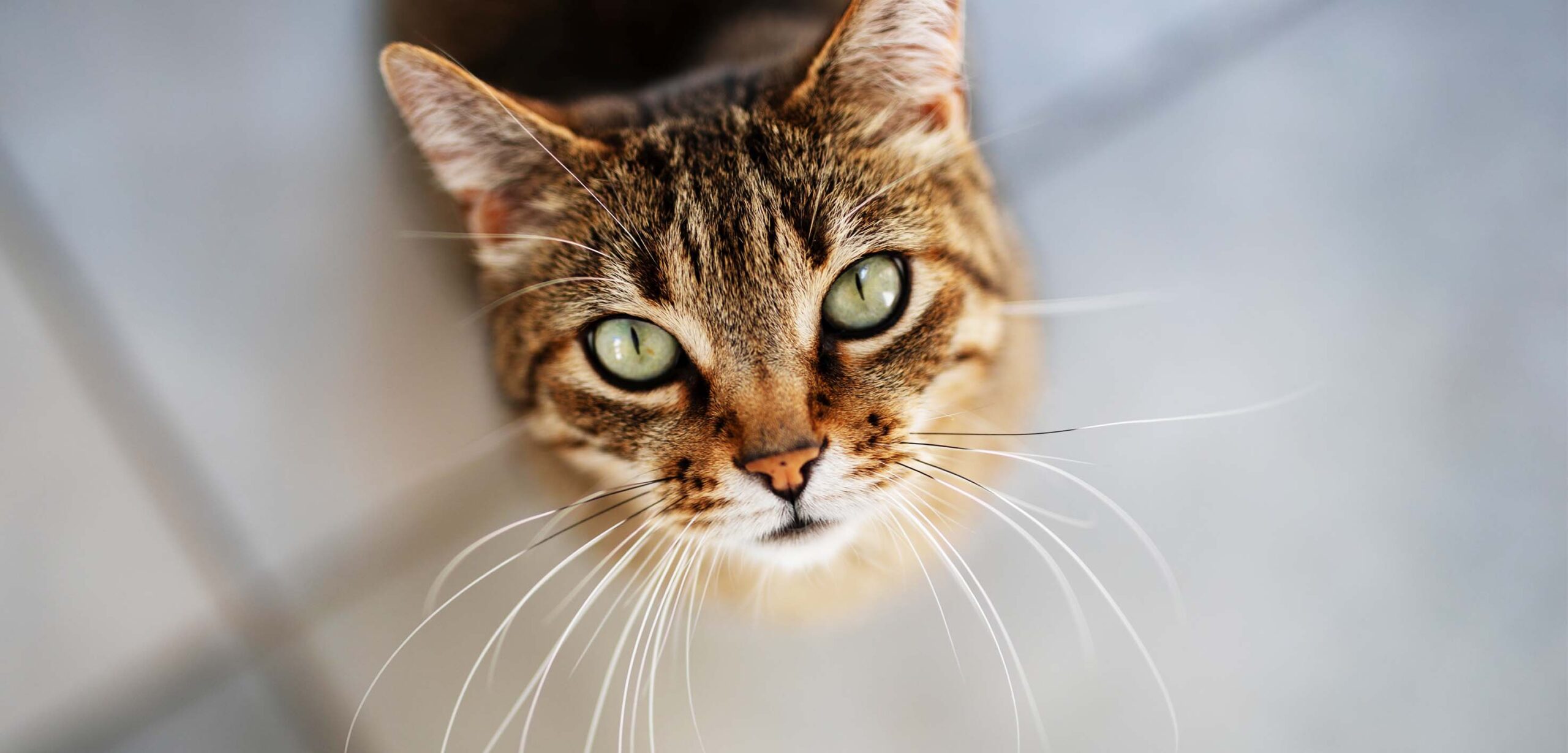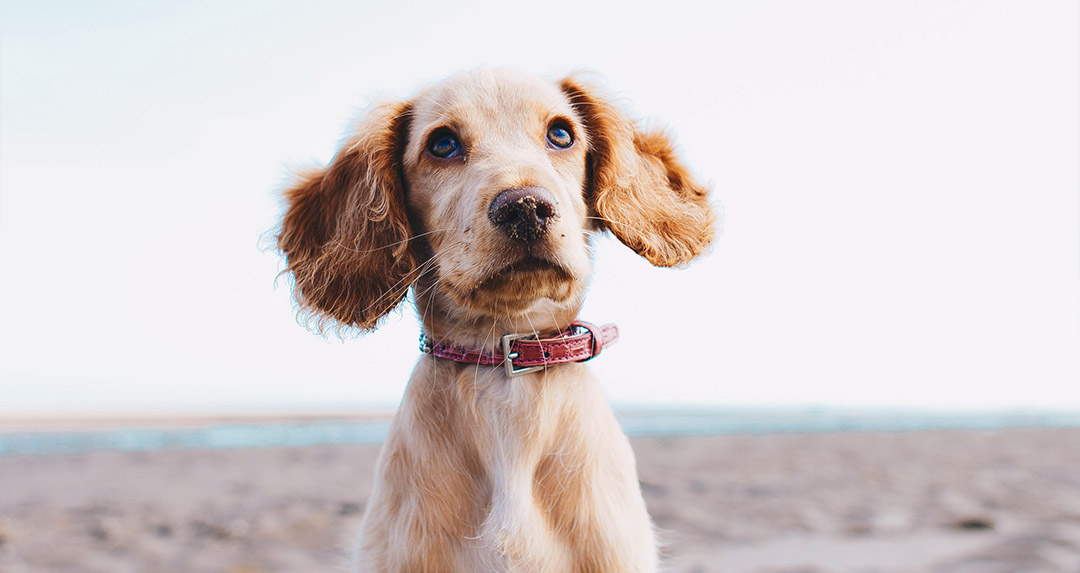Your pet’s gut health is decided by the diversity of a microscopic ecosystem living in the g.i. tract.
But this ecosystem, the microbiome, it’s so much more than the key to firm poops and fewer toots. It’s an entirely underrated, frankly fascinating community of flora that dictates more about our health and our pets than you could imagine.
The microbiome impacts everything from your pet’s risk of cancer to brain health to mood– yes, those happy tippy taps. It even helps keep the immune system running without a hitch– how your dog can lick sidewalks or his butt and trot along entirely unfazed.
It’s related to autoimmune diseases, obesity, even your dog’s allergies. It’s the crux, the lynchpin in so many ways that it has to be considered when you make choices for your pet. If you do, you have the power to care for your four-legger’s microbiome and their health overall.
On The Agenda
What Is The Gut Microbiome?
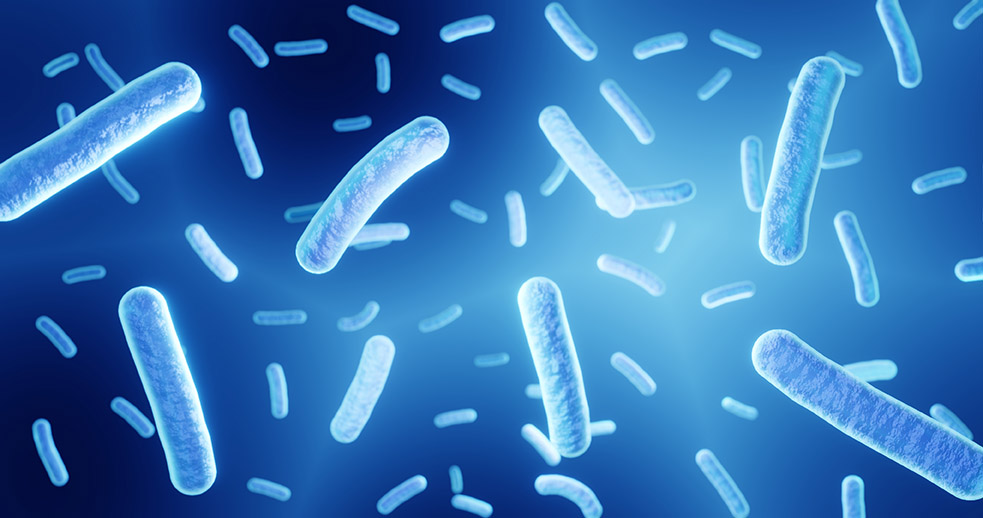
It’s a highly complex ecosystem densely populated with gut bacteria, fungi, viruses, and more that takes up residence in your pet’s gut. And yours.
The gut microbiome comprises over 1,000 different species to date, each diverse community unique to the individual host.
Though, animals that live together (i.e., you and your pack) will share more similar microbiomes. Basically, that means your dog could be picked out of a crowd just by looking at your microbiome.
Microorganisms, bacteria included, live in your dog’s ears, skin, mouth, and upper respiratory tract, and each forms its own biomes– separate communities that can affect your dog’s health for better or worse.
The umbrella term used to describe these communities housed in our bodies is the microbiome. For today, though, the focus is on the gut microbiome– the community so crucial to your dog’s health that it’s actually been dubbed the “forgotten organ.”
What Is Its Role In Health?
The majority of this large intestinal microbial community is found in the second half of the digestive tract, in a pocket of the large intestine.
It’s meant to balance two opposing functions. When it’s able to do both, you’ve got a diverse and healthy gut biome.
Absorption
The commensal or beneficial bacteria that make up a healthy, balanced microbiome eat the same foods your pet does. And when they absorb those goodies, fiber especially, they offer their host good things in return.
- The beneficial bacteria make special proteins called enzymes that help your carnivore digest his food more effectively.
- These beneficial bacteria make vitamins and amino acids that provide energy.
- They even create the majority of hormones, more than the Endocrine System (ENS).

Protection
Like a sea anemone and a clownfish, the beneficial bacteria in our gut and immune systems have a symbiotic relationship.
The beneficial bacteria compete against harmful bacteria like salmonella and E. coli for food and real estate inside the gut.
And while the good microbes are edging out the bad, the immune cells act as border patrol on the other side of the intestinal barrier to protect the delicate gi lining from invaders.
In fact, the majority of the immune system, around 85%, takes up arms in the lower intestines and colon since it’s the biggest and slowest processing part of the gi tract, making it the most vulnerable to invaders.
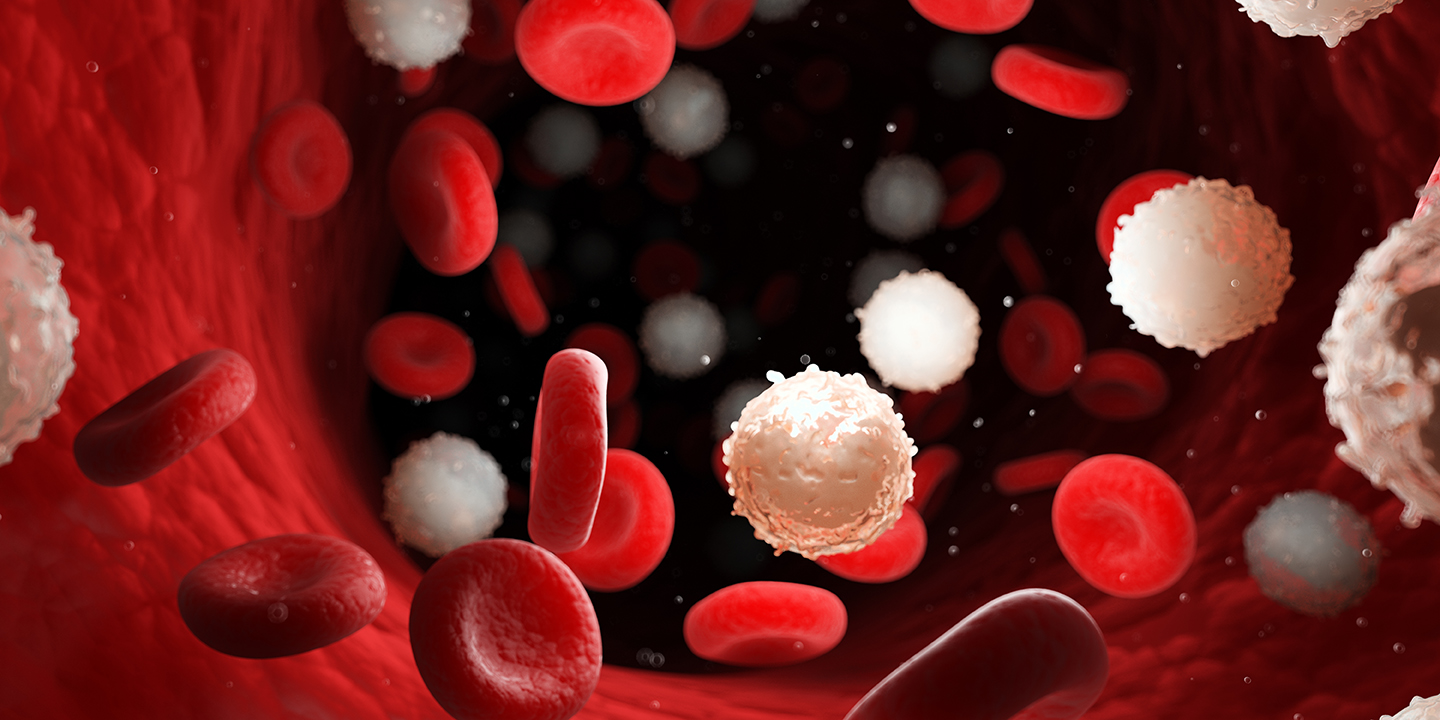
It’s a 24/7, 365 commitment, one that’s crucial to the health of your four-legger, and when there aren’t enough beneficial bacteria in the gut biome to edge out the bad, your dog’s immune system has to do double duty.
So, instead of just policing its borders, the immune system has to focus so much on keeping the bad bacteria at bay that it doesn’t have as much energy to do other important tasks, like clean mutated cells– i.e., cancer.
That’s why the health of your pet’s gut microbiome is truly the lynchpin to your four-legger’s overall health and wellbeing.
Its Connection To The Whole Body
The gut and the organisms in it can communicate with other biomes found all across the body.
To put that into perspective, microbes smaller than the human eye can see are constantly talking to another community of microbes like the skin biome to defend or adjust immune responses as needed to keep your floof healthy.
Look at just some of the relationships showcasing how health is so intricately interconnected.
Gut-Brain Axis
Those happy tippy taps mentioned? Thank the gut-brain axis! Gut bacteria make chemicals that communicate with the brain through nerves and hormones, a connection that’s been dubbed the gut-brain axis.
Since different bacteria make different chemicals, your dog’s mood depends largely on the type of bacteria in their gut.

A healthy, diverse microbiome will make hormones that include mood regulators: GABA, dopamine, and the lion’s share of serotonin.
Meaning that your whisker-toter’s mood– happiness, fear, anxiety, and in part, behaviors, are intertwined with the health and balance of a community of flora.
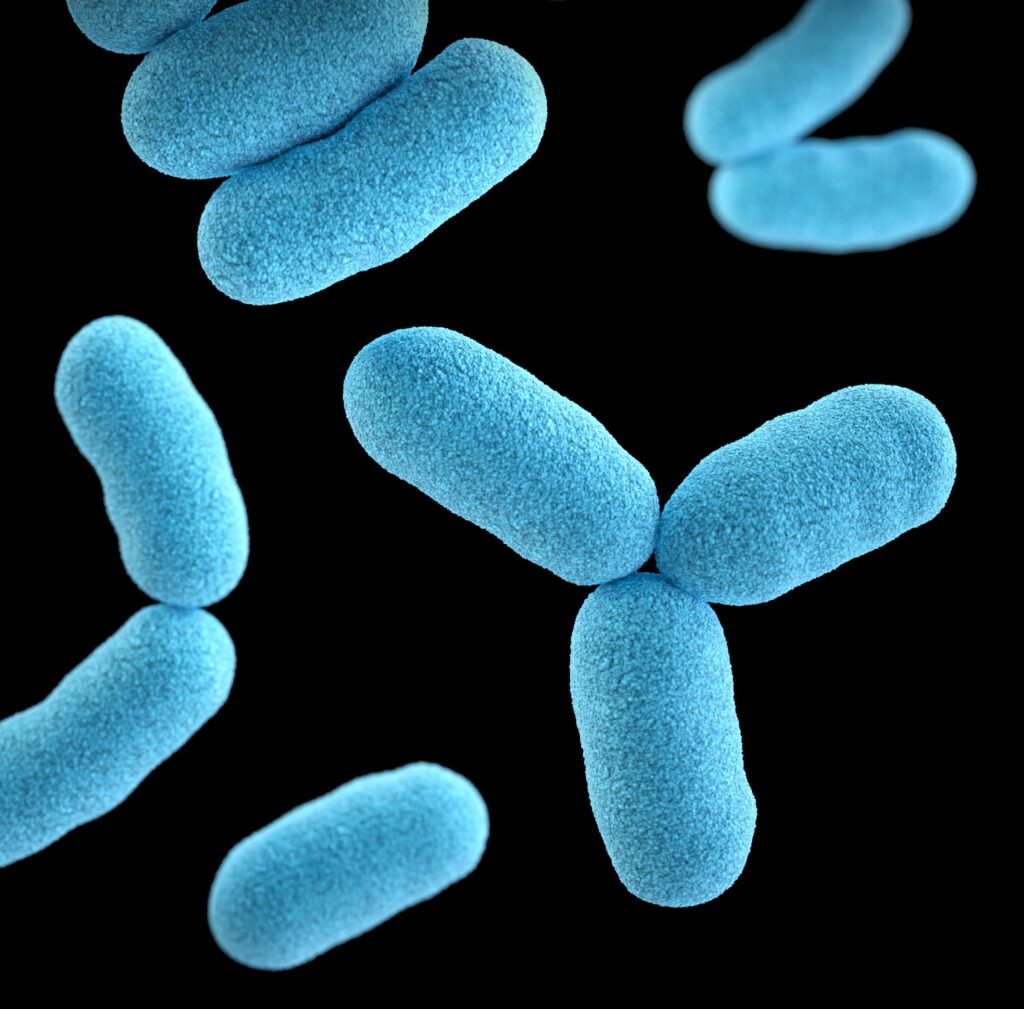
Gut-Lung Axis
For a long time, it was thought that lungs were sterile. Now, pioneers in the field came to the brow-raising conclusion that lungs do actually have bacteria, beneficial ones too. The lung microbiota cross-talk with the intestinal ones altering immune responses and homeostasis. This connection is a two-way street meaning gut immunity is affected by lung immunity and vice versa.
While we knew that people who shared a home (and bed, and all the snacks) with pets had less asthma, and those who got dirty often faced fewer immune issues like those summer colds. What we didn’t know was why. Until now.
All paws, and leading research, point to those diverse communities of bacteria.
Gut-Skin Axis
As the first barrier, the skin has its own biome second to only the gut in population density.
The skin biome acts as the first line of defense against the environment, but the gut and skin are in constant dialogue since it’s a key immune system regulator.
The skin is actually an excellent barometer for what’s going on in the gut. That’s because the gut’s health directly influences the health of distant organs, the skin included.
They’re so interconnected that there’s a strong correlation between skin issues, atopic dermatitis, even skin cancers, and an altered or out-of-balance gut microbiome.
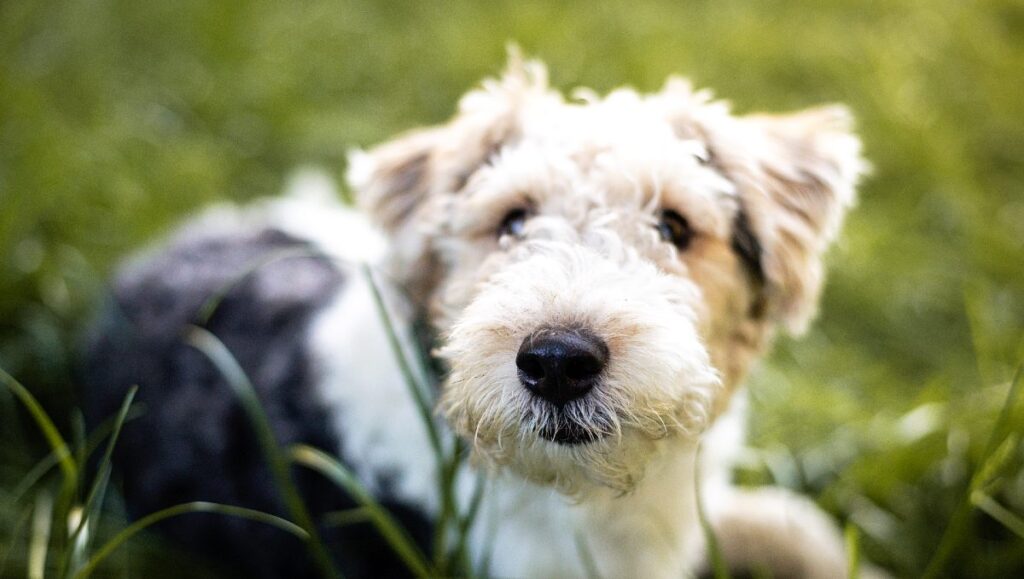
All the more reason to prioritize the gut and the skin moisture barrier, dear reader.
While research on these connections is still in its infancy, it’s quickly gaining traction in the scientific community. And what we can shout from the dog parks right now is that the body, your four-legger’s health is all interconnected.
It’s not one (cute) isolated or individual belly. The body is busy, complicated. It’s shaped by the food your pet eats, their environment, stress, toxins because it’s a complex, interconnected ecosystem humming along, doing its best to keep us and our pets playing fetch and going for walkies.
How Does the Microbiome Develop?

It’s the million-dollar question, actually! One that’s being explored with some wildly innovative research, including projects like Canine Healthy Soil. It’s a study focused on exposing biodiverse soils to puppies and kittens to restore their ancestral microbial communities.
What we do know is that just like you’d introduce kittens and puppies to new foods, experiences, and environments to build their confidence and socialization skills, you want to do the same for their gut.
The more diverse a microbiome, the healthier they are, so the goal is to expose your new whisker-toter to a diverse range of bacteria.
Let your four-legger roll in the dirt, give them all the toys, feed them a variety of real, whole foods. As you do, you’ll bring major change to the residents in their gut– not just in their booming numbers but the diversity of species that move in for a healthy and diverse gut biome.
How Does the Environment Impact the Microbiome?
As influential as the microbiome is, it’s also incredibly delicate, shaped by sleep, stress, exercise, and perhaps only second to diet, the environment.
Just as our environments build a diverse gut flora, it can also introduce toxins and harmful microbes that alter the normal population of flora that reside in the gut.
Four-leggers and two-leggers alike come in contact with environmental toxins daily. Since chemicals are used in agriculture, industry, and consumer goods, we are either topically exposed or ingest them regularly. Some of the more common microbiome-disrupting toxins are likely items we’ve all used at some time or another.
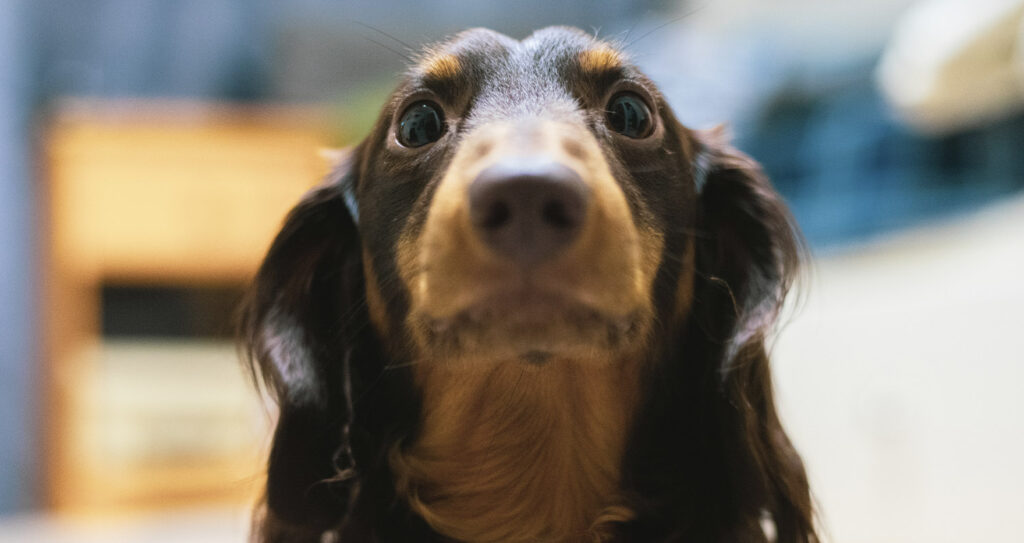
BPA & Plastics
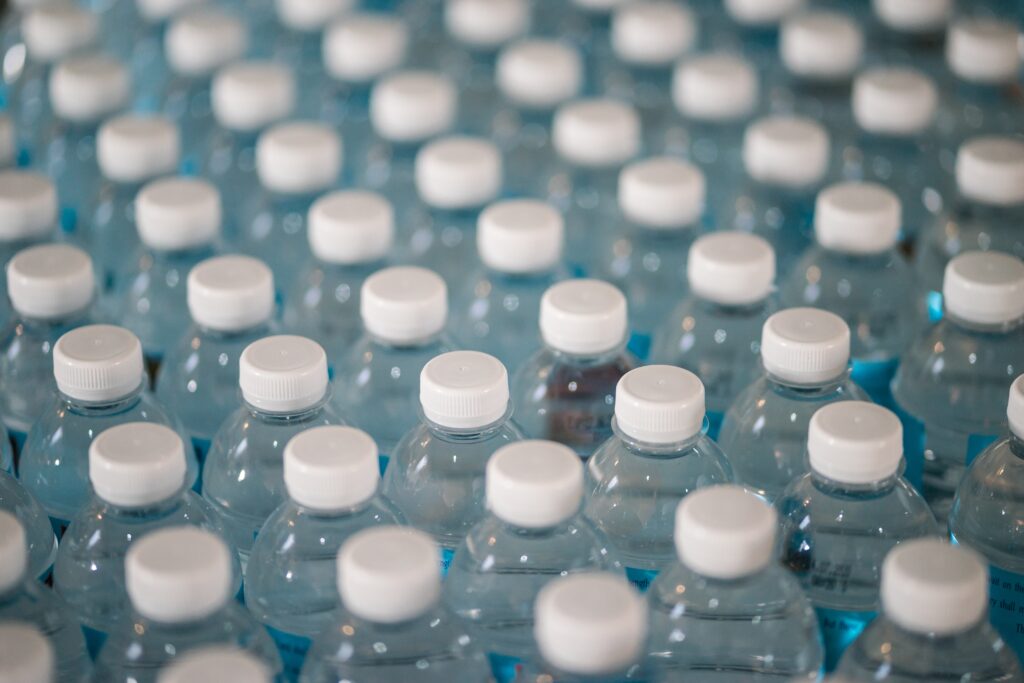
Heating plastic in any way, foods packed and shipped in plastics, BPA, and microplastics can all impact the gut flora.
Microplastic– the most common plastic being polystyrene or styrofoam was found in surprising concentrations in human stool. There’s also BPA, found in hard plastic water bottles, the lining of canned foods, water, even concentrated in fish. Both increase oxidative stress, triggering inflammation.
It also reduces the diversity in the microbiome, meaning less variety in the species residing in the gut, which is strongly correlated with inflammatory bowel disease.
Yes, this is a reality for everyone, but there’s plenty we can do about it.
Protect Your Pet’s Microbiome
- Avoid BPA at all costs
- If you feed canned food, find out what is in the lining
- Never heat or microwave your or your pet’s food in plastic containers
- Reduce plastic where you can, opting for metal, ceramic, or glass bowls– that includes the food and water dish your four-legger uses
- Use a detoxifier like Milk Thistle daily
Pesticides and Herbicides
Glyphosate, best known as Roundup, is the most widely used herbicide in the world.
Dogs come in contact with glyphosate in a number of ways; their paw pads absorb residue in the soil, water, and food, including almost all dog foods that have non-organic produce, especially grains and legumes like soy and peas.
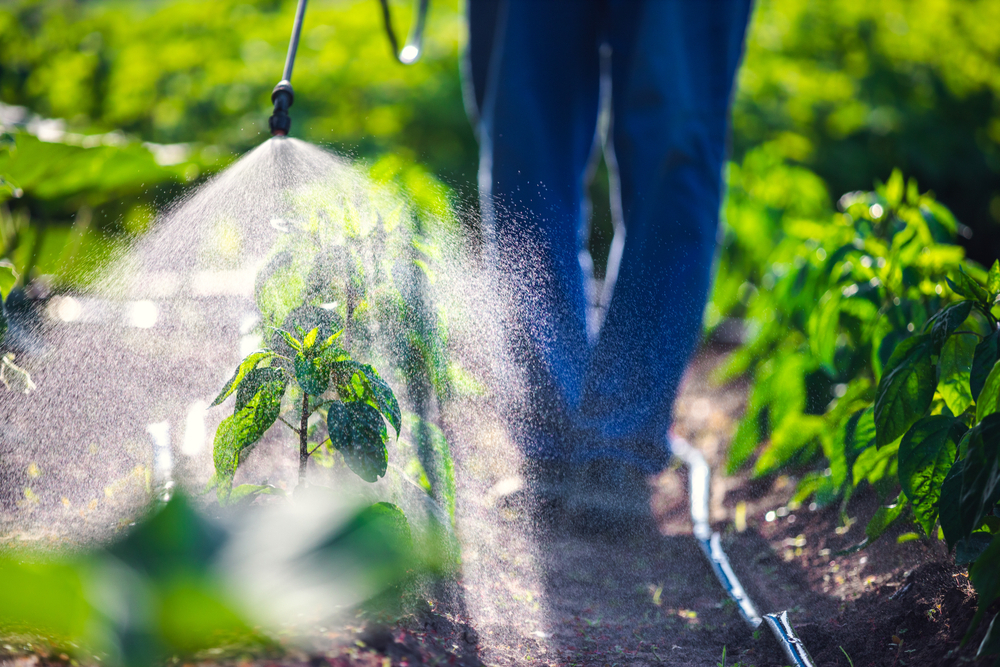
Even at what is considered “safe” doses of glyphosate, the herbicide can alter the gut flora since it’s antimicrobial, and on average, dogs have glyphosate levels 50 times higher than people.
Glyphosate can’t be washed off or broken down by cooking or baking because it’s absorbed in the crop itself. So, the most effective way to protect your four-legger against glyphosate is to avoid eating glyphosate-contaminated foods.
The best way to do that…
Protect Your Pet’s Microbiome
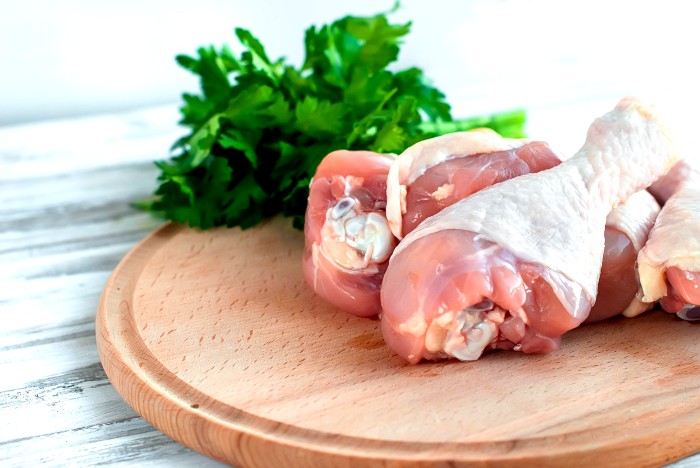
Feed a species-appropriate diet, meaning a lower percentage of carbs, to begin with (not kibble)
- 70-80% meat-based proteins
- 15% – 25% nutrient-dense, organic fruits, vegetables, and seeds
Choose Organic Produce
- Spinach
- Apples
- Strawberries
- Potatoes
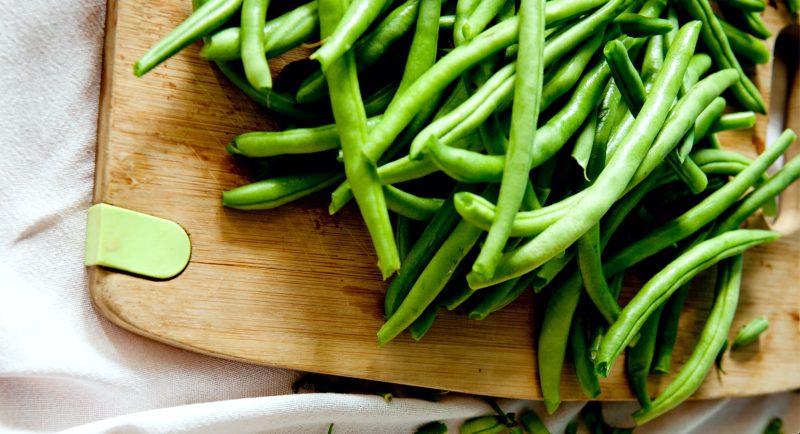
These fruits and vegetables need to come from the organic section since they make the Dirty Dozen List– an annual list noting the produce most contaminated with pesticides.
With organic products, it’s all about the NOs. No genetically modified ingredients are allowed in these products. They must be made without synthetic fertilizers, ionizing radiation, or sewage sludge (though you think these things would be a given).
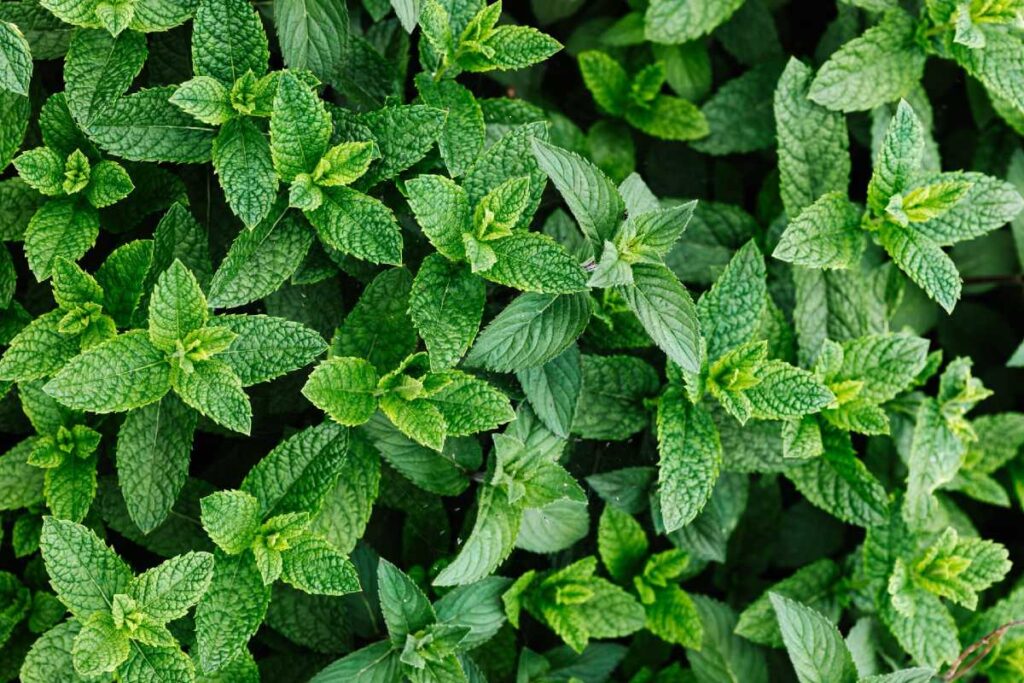
If you can’t do all organic all the time, avoid Roundup Ready or GMO crops because they are genetically modified to withstand applications of glyphosate. Most of these shouldn’t make it in your carnivore’s dish anyways, but if you’re feeding kibble, ingredients like soybeans, corn, and their byproducts are routinely used in high percentages.
- Soybeans
- Corn
- Canola
- Alfalfa
- Papaya
- Sugar beets
- Yellow Squash/Zucchini
- Potato
While wheat and peas aren’t RR or GMO crops, they are routinely sprayed with a pre-harvest desiccant (aka Roundup), so consider opting for organic if you see them in the ingredient deck.
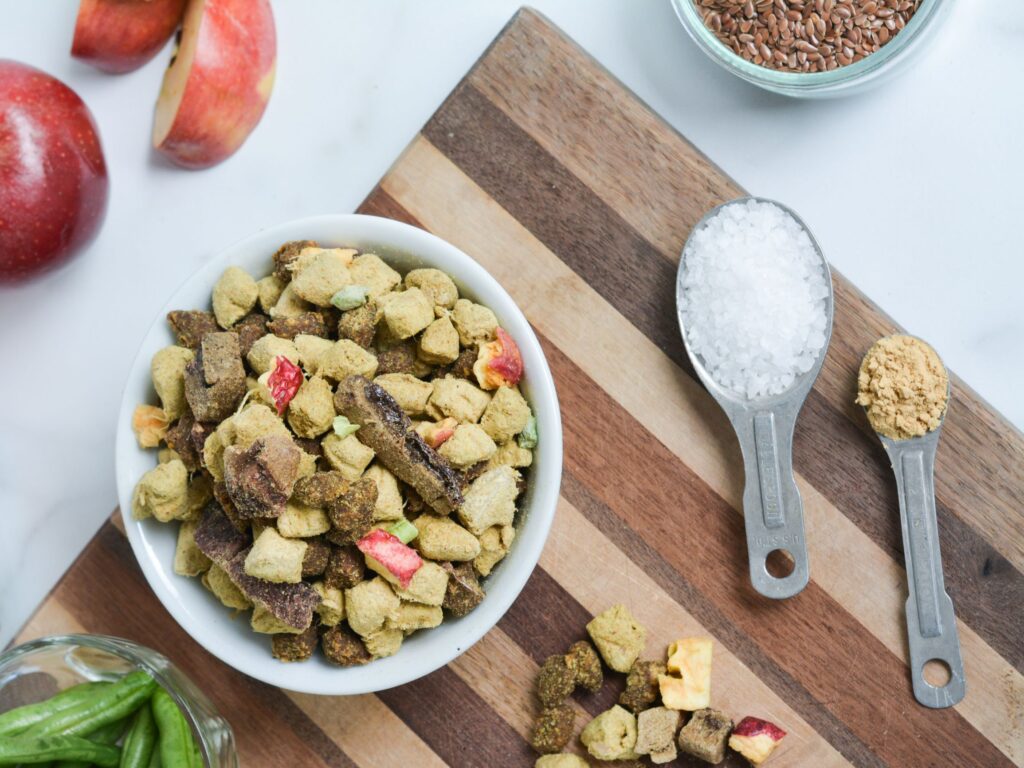
If you want species-appropriate food for dogs right here and now, the Simple Food Project offers recipes that check all the boxes you’re looking for– organic produce with only 16 real, whole ingredients picked for your carnivore.
- Help the liver by adding organic whole ground milk thistle seed. Milk Thistle supports the liver, acting both as a protectant and detoxifier, flushing out harmful toxins like glyphosate, so your pet’s liver can function more efficiently.
Heavy Metals
Heavy metals are common contaminants in soil and drinking water due to industrial pollution and larger waterways.
Toxins found in fish can include mercury, arsenic, cadmium, and lead — which are harmful to dogs and cats (any living being, basically). Since toxins bioaccumulate in larger fish especially, the burden of heavy metals grows exponentially for those who consume contaminated fish or fish oil.
Ingesting these heavy metals reduces those beneficial bacteria in the gut that protect against intestinal inflammation.
Deep breath. It’s really not all doom and gloom. You can’t write water off completely, and there are enough benefits from fish that you shouldn’t boot from the bowl completely. Instead, you can take steps to maintain a healthy, balanced microbiome

Protect Your Pet’s Microbiome
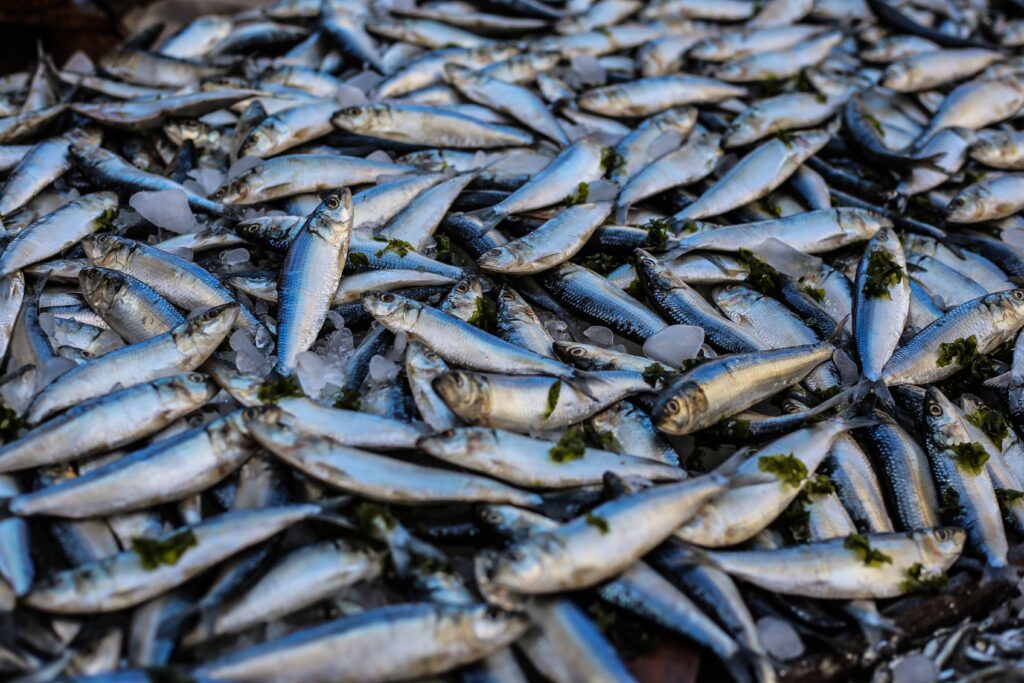
- Rotate omega 3 sources every couple of weeks or months
- Consider smaller fish like sardines or crustaceans like krill because they are more likely to be a cleaner source due to biomagnification.
- We really can’t stress this enough, so here it is again. Add that Milk Thistle. It’s a detoxifier to help your pet’s liver process all that gunk effectively– heavy metals included.
What Are the Signs of An Imbalanced Microbiome & Unhealthy Gut
The most common gi issues can actually be from an imbalanced microbiome:
- Diarrhea
- Irregular stool
- Bloating
- Bad gas
Since gut health is entwined with bowel and anal gland health, bowel issues like impacted anal glands are an extension of an imbalanced microbiome.
Then there are the less obvious signs:
- Skin issues
- Food allergies
- Autoimmune disorders
- IBS
- Leaky Gut

Dysbiosis (AKA Leaky Gut)
While not exactly the same, dysbiosis and leaky gut are used interchangeably because one will lead to the other.
Dysbiosis is an imbalance of the gut flora.
The food your four-legger eats, their environment, stress, toxins all tip the balance in the gut biome. Without a healthy, balanced community of flora edging out the competition and its symbiotic relationship with the immune system’s own border control, gut inflammation can happen.
Normal, healthy intestinal cells interlock– think of them as a zipper– keeping gut contents in and everything else out. But, with inflammation because of dysbiosis, the cells lose their grip, making the barrier permeable. Hence, the aptly named leaky gut.
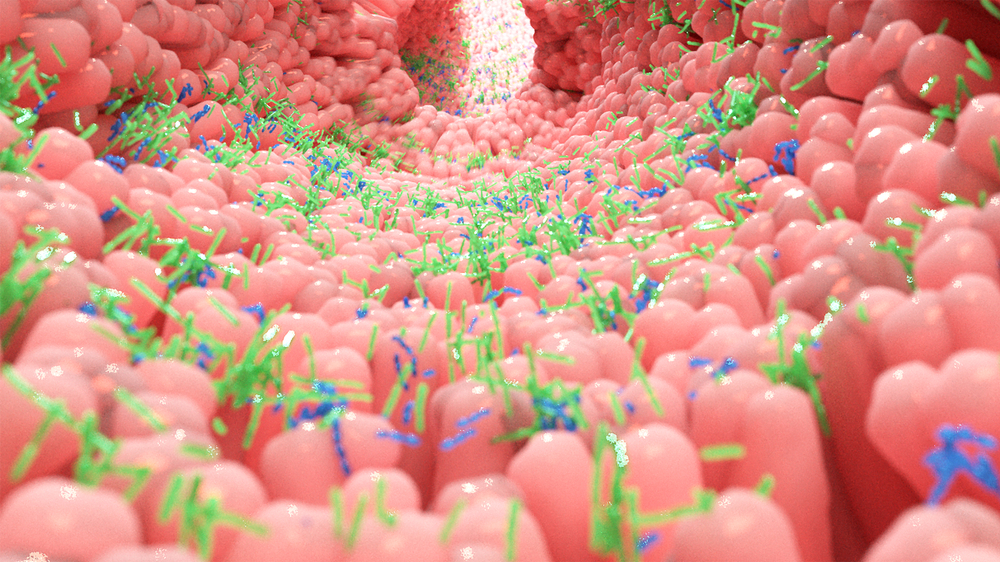
Things from the gut– bacteria, yeast, proteins, kill the gut’s beneficial bacteria et al., start to leak into the bloodstream, which sets off alarms for immune defenses, the border control on the outside intestinal barrier. The result– the immune response triggers more inflammation with the potential for chronic inflammation in everything from the joints to the brain, heart, and beyond.
Since health is clearly so interconnected, leaky gut aggravates any inflammatory condition– IBS, arthritis, chronic pancreatitis, dermatitis, etc. This makes rebalancing the gut flora one incredibly crucial piece of the puzzle.
It obviously won’t replenish the joint fluid of an arthritic dog or hydrate and nourish the skin, but it will play a pivotal part in the solution, which is exactly why we curate the bowl.
Starting with the food you put in the bowl to feeding the gut, nourishing the skin, and the joints– curating the bowl is the most comprehensive and holistic approach to your four-legger’s health.
How to Restore Gut Flora & Support the Microbiome
With the right types of bacteria in the gut at the right levels, we can help restore a healthy balance in your dog’s microbiome. To have the biggest impact on the health and diversity of the gut biome, you’ve got to start with what’s in the bowl.
Feed Your Carnivore A Real, Whole Food Diet
Your dog needs real, whole foods– living food with enzymes, antioxidants, and other nutrients needed to diversify the microbiome– in proportions dogs were designed to eat.
A species-appropriate diet for your dog has…
- 70-80% skeletal and organ meat
- Fewer carbs, 25% at most from the most nutrient-rich varieties of veggies, fruit, and seeds
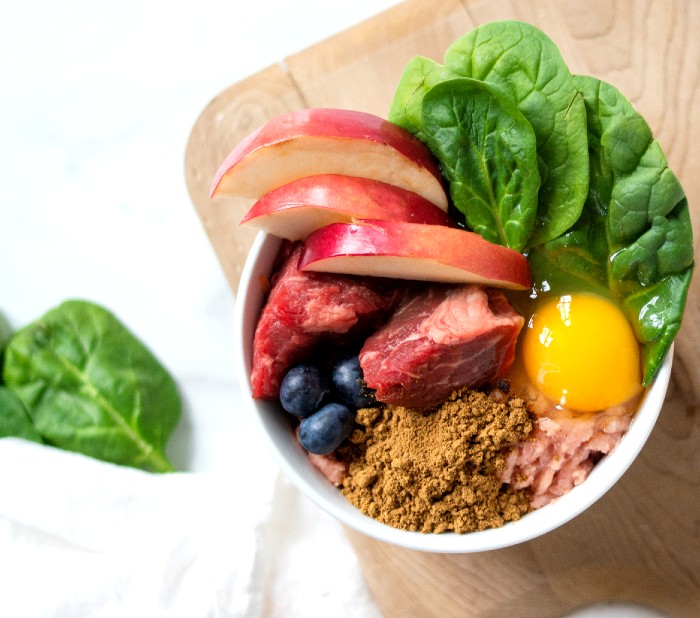
Just look at the science– dogs eating a raw diet not only have more diverse microbiomes (which, again, is the goal) but drastically fewer disease markers.
There’s empirical proof for what I think we all know innately– that feeding less processed (again, not kibble), species-appropriate whole foods are healthier.
If you can’t make your own balanced DIY raw diet, there are plenty of alternatives. Freeze-dried raw recipes like The Simple Food Project diets are already nutritionally balanced with whole foods only (no synthetic vitamins here, folks), making it easy to put the right food on your pet’s plate every day.
Avoid Pesticides & Toxins

Pesticides
As much as you may despise those weeds, nix the herbicides & pesticides completely.
- You can use diatomaceous earth and cedar chips in gardens and throughout your yard as a bug repellant, including flea and tick prevention. And with a bit of proactive weeding, you can curb the onslaught of dandelions without having to rely on harsh chemicals.
- Opt for organic foods if you can since pesticides used on conventionally grown produce kills the beneficial bacteria in the gut.
Toxins
- Test your water for heavy metals, glyphosate, and other common contaminants.
So, get your tap water tested annually. If there are contaminants in the water, treat the water. Pitchers, faucet mounts, even an installed filter are all options.
- Rotate Your Dog’s Water Sources
Humans drink from multiple different sources, which offers us a variety of beneficial minerals. If a dog is drinking from the same source day in and day out, they are exposed to any water quality issues that can accompany groundwater– common drinking water contaminants like bacteria, viruses, and protozoa (like giardia).
So, buy the occasional gallon of spring water, take your four-legger to sight-see, have them stay with the grand pet parents.
- Avoid BPA and microplastics starting with your pup’s food and water bowls. You can use glass, ceramic, or metal instead.
- Household cleaning products like bleach, alcohol, ammonia
The ingredients that actually make a product effective make them toxic to us and our pets. Exposure through their pads, skin, or licking, contributes to our pets’ toxin exposure overall
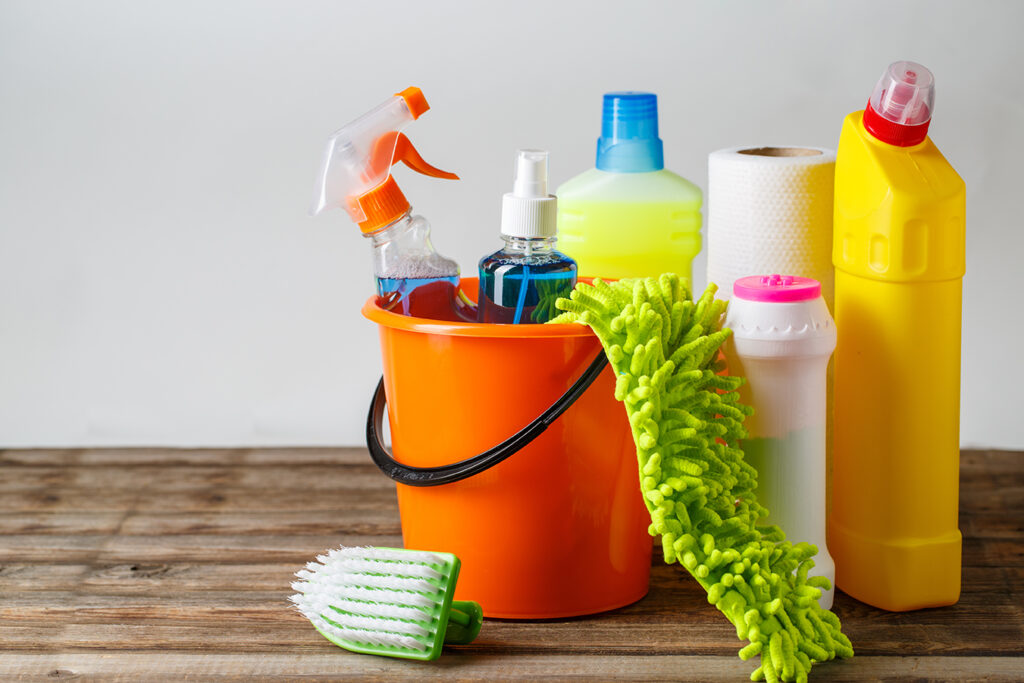
Minimize the Use of These If You Can
Antibiotics

Antibiotics can be considered a hard factory reset– they don’t discriminate, all bacteria are destroyed, good and bad. It can take up to 4 years for the microbiome to come back fully with antibiotic use.
To be clear, sometimes antibiotics really are the answer.
When they’re needed, thank dog we have them. But when you may be able to avoid it by running another test, run the test.
Then if an antibiotic is the right choice, give a synbiotic like Microflora to recolonize the gut with healthy bacteria after taking the antibiotics.
Flea & Tick Controls & Dewormers
Monthly applications introduce the body to harsh chemicals, toxins that negatively impact the microbiome and put the liver under stress.
These treatments protect your dog, so we’re not saying don’t utilize them.
But take stock to decide when and if it’s warranted– A dog living in the northeast (beautiful places, worst tick populations) needs preventative care, whereas a dog living in an apartment in the heart of NYC really doesn’t.
There are also natural alternatives like food-grade diatomaceous earth and pumpkin seeds that are anti-parasitic and natural dewormers (both can be found in Scooter’s Butt Bars).
They can be used alongside pharmaceuticals if your pet has to be treated for either and used continuously after treatment to reduce the likelihood of needing the heavy-hitting pharmaceuticals again
Vaccinations
There’s a difference between protection and over-vaccinating. There are core and non-core vaccines– ones that every dog and cat needs and others that may make sense for some animals and not others.
To avoid over-vaccination, pet parents should consider taking other steps like going to more vet appointments to space out the vaccines or opting for a titer test to make sure your pet really does need a vaccine before giving additional vaccines.
If harsher preventatives are necessary, give your dog USDA Organic Milk Thistle two days before and after a vaccine or flea/tick/heartworm treatment. It’s a hepatoprotective herb that reinforces the liver as a protectant and also as a detoxifier.
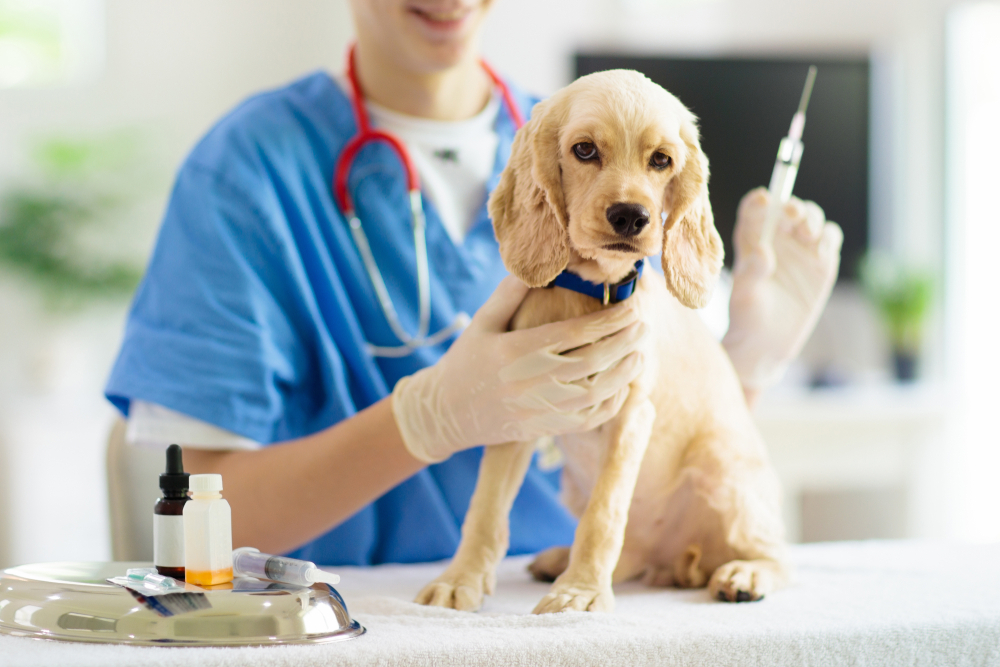
Add Synbiotics To The Bowl
Feeding your pet’s gut with synbiotics– probiotics + prebiotics can repopulate the microbiome and balance the gut.
Probiotics are good bacteria that take up residence in the gut, keeping it healthy. They compete against bad bacteria for a healthy, balanced microbiome.
Without them, you’ve got gassy dogs and constipated cats, and those are just the first signs of an imbalanced microbiome. Probiotics benefit everything from good poops to healthier skin to your pup’s mood.
Because the microbiome resides in the lower g.i. tract, you need to have enough or a therapeutic dose of probiotics, or culture-forming units (CFUs), to make the journey and populate the gut. AND, the key– enough prebiotics to feed them without feeding bad bacteria. (You can download the guide to exactly what you need in a probiotic here.)
Then put all of these tips into action– add synbiotics, feed real, species-appropriate foods, avoid the toxins and gut destroyers like antibiotics.

Let them roll around in the dirt and eat (quality) poop (just hold off on the kisses till you toss them a dental chew). All of these behaviors come naturally and clearly for good reason.
Keep in mind, the longer the bacterial community is so out of balance, the longer there have been issues, the longer it will take to heal. It’s a process– one you and your ride or die are in together– but one that’s well worth the grind when it means a healthier, happier four-legger.
We’re here to lend a helping hand, so if you need more guidance with your own four-legger, take the quiz to curate your pet’s bowl. You’ll get personalized recommendations just for your pet and their needs.
Share this Post

Dr. Chris Besent
Chris Bessent, DVM, MSOM, Dipl. OM, L.Ac. has over thirty years of experience in veterinary medicine including certificates in veterinary acupuncture, veterinary chiropractic and veterinary Chinese herbology. Imbued with Eastern philosophy and the knowledge that food is the foundation of health, Dr. Bessent also received her degree in veterinary nutrition and began to formulate recipes fit for a carnivore from nothing but whole foods. Currently, she divides her time between the Simple Food Project and Herbsmith, both of which are owned and operated out of her facilities in southeastern Wisconsin.

Kayla Behling - Editor
Kayla is the Content Editor for Herbsmith. She has a cat named Professor Cat-Faced Meowmers, who goes by Kitty, and a goof of a dog, named Duck. She stays busy biking trails, playing board games, and searching for the next best craft beer.

